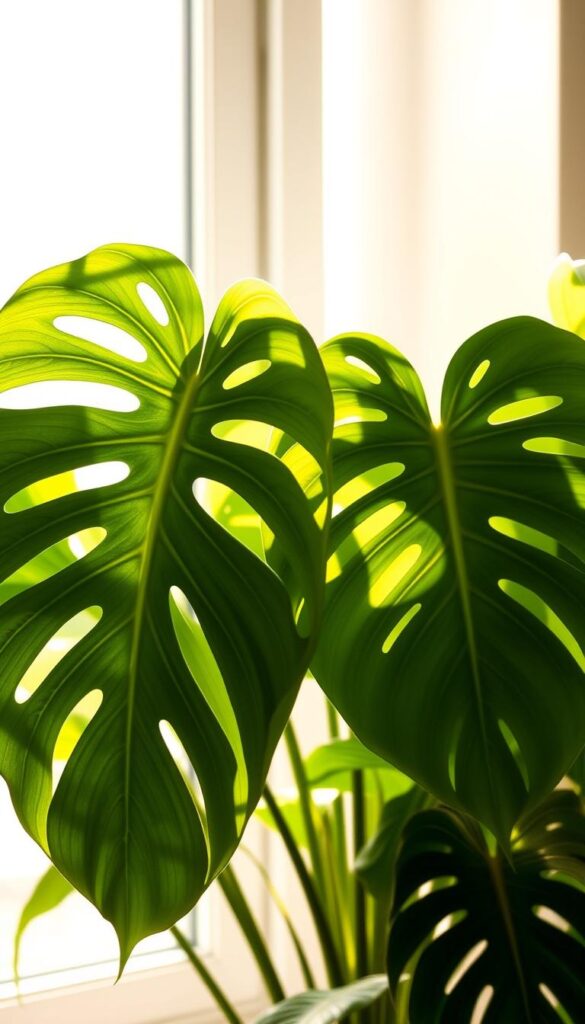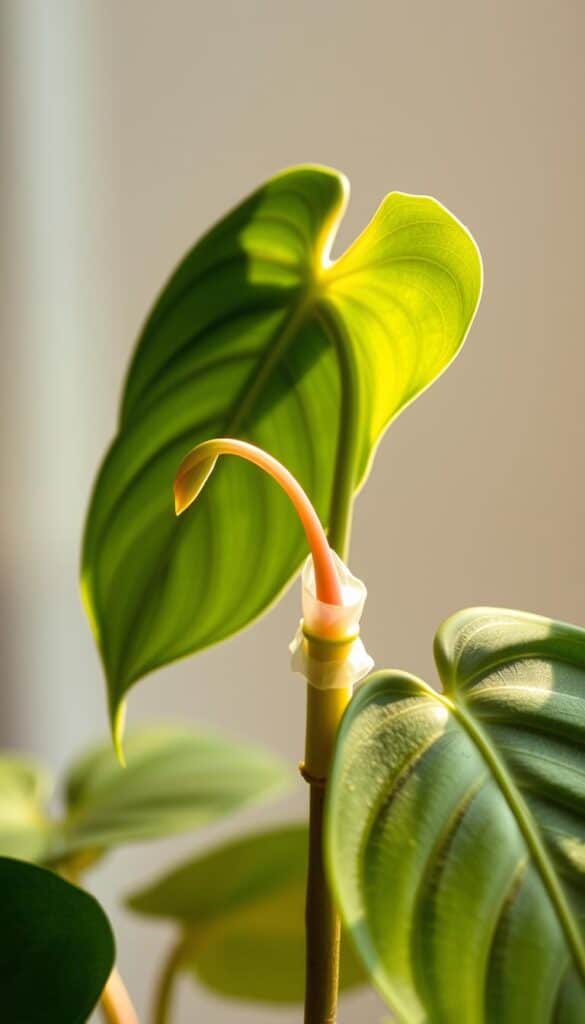Have you ever stumbled upon a houseplant so unique that it instantly captivated your heart? For me, that plant is the Monstera Obliqua. This rare, vining plant has stolen my attention with its stunning, perforated leaves that seem like a work of art. Whether you’re a seasoned plant enthusiast or just starting your green journey, this guide is here to help you understand and care for this captivating species.
What makes the Monstera Obliqua truly special is its distinction from similar plants like the Monstera adansonii. Its large, intricate leaves are not just a visual treat but also a testament to nature’s ingenuity. To keep this beauty thriving, it’s essential to understand its specific needs—bright, indirect light, well-draining soil, and high humidity. These conditions might seem a bit particular, but trust me, the payoff is well worth the effort.
In the following sections, we’ll dive into practical care tips, propagation methods, and common pitfalls to avoid. By the end of this guide, you’ll be well-equipped to give your Monstera Obliqua the care it deserves. Let’s embark on this journey together and uncover the secrets of this enchanting plant.
Key Takeaways
- The Monstera Obliqua is a rare plant known for its unique, perforated leaves.
- It thrives in bright, indirect light and high humidity.
- Well-draining soil is essential for its health and growth.
- Propagation and care require specific attention to detail.
- This guide covers care tips, propagation, and troubleshooting.
Understanding Monstera Obliqua: An Introduction
Discovering the Monstera Obliqua was like uncovering a hidden gem in the world of houseplants. This rare species captivated me with its unique beauty and intriguing characteristics. Let’s delve into what makes this plant so special and why it has become a favorite among plant enthusiasts.
What Makes This Plant Unique?
The Monstera Obliqua stands out with its striking, highly perforated leaves and elegant vining habit. Compared to the Monstera adansonii, it boasts larger leaf perforations and a more robust growth form. Native to the tropical regions of Peru, this plant belongs to the Monstera genus and is a true marvel of nature.
| Feature | Monstera Obliqua | Monstera adansonii |
|---|---|---|
| Leaf Perforation | Larger, more intricate holes | Smaller, more rounded holes |
| Growth Habit | More vigorous vining | Less vigorous, compact |
| Leaf Size | Larger leaves | Smaller leaves |
| Native Habitat | Peru | Central and South America |
Why I Fell in Love with Monstera Obliqua
My journey with the Monstera Obliqua began when I first laid eyes on its stunning foliage. The intricate patterns and large perforations drew me in, and I knew I had to learn more about this plant. What I discovered was a species that not only thrives in bright, indirect light but also requires well-draining soil and high humidity to showcase its delicate beauty.
As I delved deeper, I found that proper care involves avoiding direct sunlight and ensuring the right balance of moisture in the soil. The Spruce and Plants of the World Online provided valuable insights, helping me understand the unique needs of this plant and differentiate it from similar species like the Monstera adansonii.
Ideal Growing Conditions for monstera obliqua
Creating the perfect environment for your Monstera Obliqua is key to its thriving. This plant flourishes in specific conditions that mimic its natural habitat.
Light, Temperature, and humidity Needs
Provide your Monstera Obliqua with bright, indirect light for at least 7 hours daily. Direct sunlight can be too intense, so an east- or north-facing window is ideal. Maintain a consistent temperature around 77°F (25°C) for optimal growth. Humidity is crucial—aim for 80% or higher. Consider using a humidifier or placing the plant in a terrarium to maintain these conditions.

Soil and drainage Requirements
Use a well-draining soil mix that retains moisture but prevents waterlogging. A blend of indoor potting soil, perlite, and sphagnum moss works well. Check soil moisture by inserting your finger or using a moisture meter. Proper drainage is vital to prevent root rot, so ensure your pot has good drainage holes.
Step-by-Step Care and Maintenance
Caring for Monstera Obliqua is all about consistency and attention to detail. By following a simple routine, you can ensure your plant thrives and remains as stunning as the day you brought it home.
Watering and Fertilizing Guidelines
Watering: Check the soil moisture by inserting your finger into the top inch or two of soil. Water only when it feels dry. During spring and summer, I water my Monstera Obliqua once a week. In fall and winter, I reduce it to every 10-14 days. Using a moisture meter can make this process even easier.
Fertilizing: Feed your plant with a water-soluble fertilizer at half strength during the growing season (spring and summer). Dilute the fertilizer to prevent burning the roots. I like to fertilize my plant every two weeks during these months to promote healthy growth and vibrant leaves.
Supporting Growth with Moss Poles and Trellises
Monstera Obliqua is a natural climber, so providing support is essential. I use moss poles to give my plant a surface to climb on. This not only keeps the plant upright but also encourages better leaf growth. Trellises are another great option if you prefer a more structured look. Both methods allow the plant to grow naturally while keeping your space organized.
| Support Type | Benefits |
|---|---|
| Moss Poles | Soft texture, promotes healthy root interaction, easy to install |
| Trellises | Structural support, customizable designs, space-saving |
“The right support can make a world of difference in how your Monstera Obliqua grows and looks.” – Jane Smith, Horticulturist
Avoid over-fertilizing and overwatering, as these can lead to root rot. Repotting in spring or summer when the plant outgrows its container ensures continued health. Maintain consistent temperature and humidity levels to create an ideal environment for your Monstera Obliqua to flourish.
Propagation and Pruning Techniques
Propagation and pruning are essential skills for any plant enthusiast. These techniques not only help in multiplying your Monstera Obliqua but also keep it healthy and looking its best.
How I Successfully Propagated My Plant
I still remember my first successful propagation of a Monstera Obliqua. It was during the summer when the plant was in its active growth phase. I took healthy stem cuttings, ensuring each had at least two nodes. After preparing the cuttings, I placed them in moist sphagnum moss. It was amazing to see how the aerial roots developed over time, signaling that the propagation was successful.
Pruning: When and How to Trim
Pruning is crucial for maintaining the shape of your Monstera Obliqua and encouraging bushy growth. I recommend pruning during the summer months when the plant is actively growing. When trimming, focus on removing leggy vines and shaping the plant to your liking. Be careful not to remove more than one-third of the plant at a time to avoid stressing it.

By following these propagation and pruning tips, you can enjoy a thriving Monstera Obliqua that brings beauty and life to your space.
Addressing Common Challenges and Pests
Even with proper care, Monstera Obliqua can face certain challenges. Being proactive about these issues can save your plant from distress.
Identifying and Preventing Overwatering and Root Rot
One of the most common issues is overwatering, which can lead to root rot. If you notice yellowing leaves or a soft, mushy stem, it’s a sign of too much water. To prevent this, always check the soil moisture before watering. I like to use a moisture meter for accuracy. If root rot has already set in, act quickly by repotting the plant in fresh, well-draining soil and trimming any affected roots. This will give your Monstera Obliqua a fresh start.
Dealing with Pests and Environmental Stress
Pests like spider mites, scale, and whiteflies can also trouble your plant. Regularly inspect the leaves, especially the undersides, for any signs of infestation. If you spot pests, treat the plant with a mild insecticide. Environmental stress from extreme temperatures or low humidity can cause leaf drop. Maintaining consistent conditions and monitoring your plant’s response will help it thrive. Patience and consistent care are key to overcoming these challenges and keeping your Monstera Obliqua healthy.
Consistent monitoring and quick action are essential for a healthy Monstera Obliqua.” – Plant Care Specialist
Conclusion
Caring for a Monstera Obliqua is a journey that combines challenge and reward. This plant captivates with its unique, perforated leaves and vigorous growth, making it a standout in any space. By focusing on the right balance of light, humidity, and soil, you can unlock its full potential.
Remember, consistency is key. Water carefully, maintain high humidity, and provide the support it needs to climb. Experiment with propagation and pruning to keep your plant healthy and thriving. Understanding its specific needs is the foundation of successful care.
My own experience with this plant has been incredibly rewarding. It’s more than just a decoration; it’s a connection to nature’s beauty. I hope this guide has inspired you to give the Monstera Obliqua the care it deserves.
Thank you for joining me on this journey. If you have any questions or tips to share, I’d love to hear from you. Happy planting!
